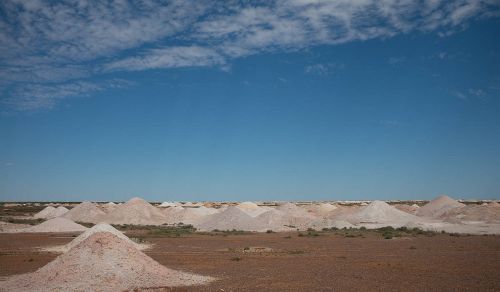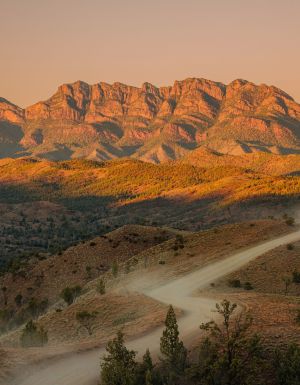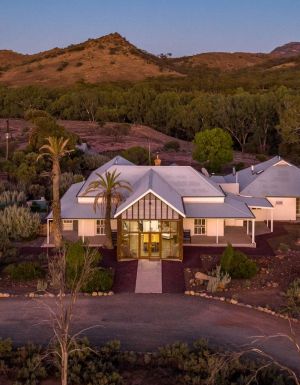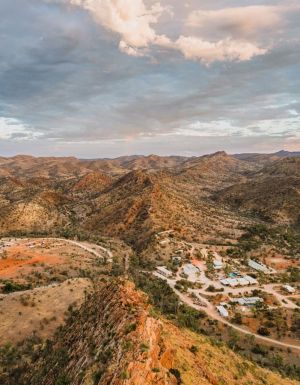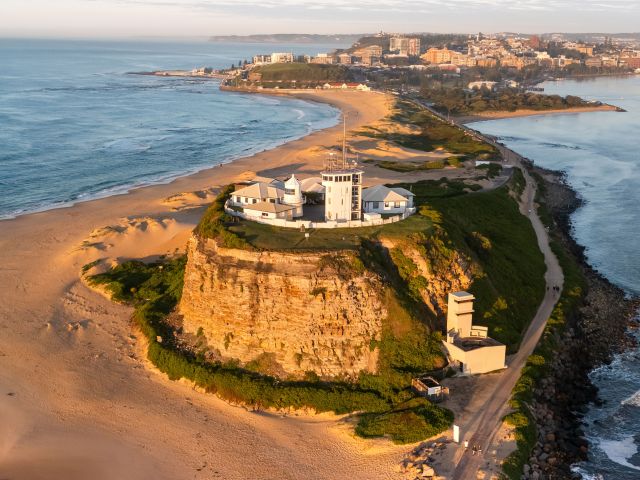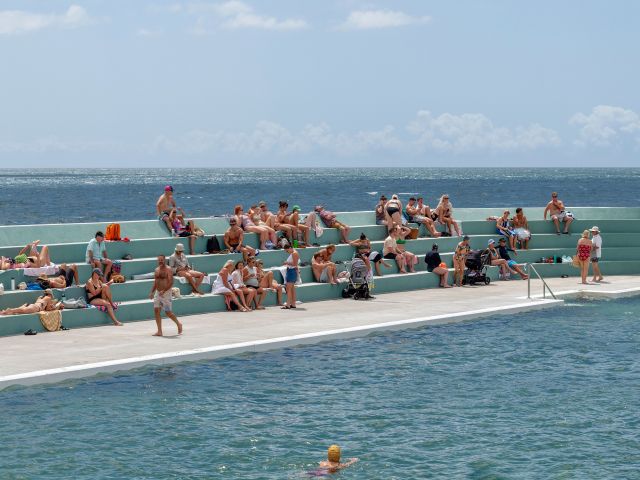Opal mining town enigma Coober Pedy is very special place. Very special. Here are 13 reasons why this is Australia’s most delightfully strange town.
1. Blowing up stuff is a proud tradition
Not too much gets blown up these days but back in the 1980s you could buy dynamite over the counter at the local supermarket. The locals would settle disputes by blowing things sky-high rather than with their fists or a trip to court. The said-same courthouse, a police car and a restaurant were all destroyed at one time or another (apparently with no related deaths).
2. No dynamite in the cinema, if you don’t mind
A legacy of that proudly pyrotechnic era is a message which still flashes up before the feature film at the local drive in: ‘Patrons: Explosives Are Not To Be Brought Into This Theatre – The Management’.
3. Surnames are banned
Well, not officially, but they’re not embraced nor encouraged. People go their whole lives out here just being called by their nickname, such as Pommy John or Chicken Man, without anyone ever finding out who they really are. Sometimes it’s best not to ask too many questions – if you get what I mean.
4. No one has a clue how many people live here
There are the two versions of Coober Pedy’s population: the official and the unofficial. The 2011 census stated that were 1695 residents living here. But even the local council laughs at that figure, claiming it to be nearer to “around 3500". So why the difference? Let’s just say that the town is a great place to come to get a “fresh start".
5. It’s like a film set jumble sale

The landscape around Coober Pedy has doubled for everything from post-apocalyptic wastelands to Mars, starring in films like Mad Max Beyond Thunderdome, Priscilla, Pitch Black (Vin Diesel) and Kangaroo Jack. You’ll stumble across the odd discarded (and the reclaimed) prop just walking around town, such as a Mad Max Interceptor and a ‘blaster’ from Val Kilmer’s flick Red Planet.
6. It’s amazingly multi-cultural

Uncharacteristically for a small Australian country town of only a few thousand souls, Coober Pedy is intensely multicultural. In fact, with 45-plus cultures, from Serbians to Sri Lankans, it could be the most diverse place per capita in Australia. The Greek community is still one of the most dominant.
7. It’s got more opal shops than anywhere else on Earth

Again, another unofficial Coober Pedy statistic which could or could not be true. But we’re not talking about official shops anyway, of which there are plenty, but more the fact that you can buy a precious gem pretty much anywhere in town: from hotels and cafes to, well, other places that don’t offer money-back guarantees; the backbone of the ‘black opal economy’ here.
8. Most holey
One Coober cliché that lives up to the hype are comparisons with the moon’s surface (because of the countless chasm-like craters from disused mines, each with its own little pile of dirt next to it). There is no ‘backfill’ order in the town (you don’t have to fill in your claim), which gives you an endless choice of where to hide a ‘ratter’ (an opal thief). Well, so the legend goes.
9. Second-chance draw
This lack of a backfill regulation does have an upside, helping out budding and struggling miners who can’t afford the equipment to dig their own claims. It’s estimated that around 40 per cent of opal is found by “secondary" miners and noodlers: people who sift through a mine’s waste dirt. Visitors can do this at a couple of sites in town. You never know.
10. Immortal boots
Legend has it that Coober Pedy’s cemetery, Boot Hill, is named thus because people here work so hard and long that they die, and are buried, with their boots on.
11. Boiling earth

The desert earth of the ‘Moon Plain’ near the Breakaways Reserve, a stunning rock formation and sacred indigenous site about 30 kilometres outside town, can reach temperatures of 65 degrees when the summer air temps hit 45-plus.
12. Natural air-con
Famously, dugouts (ex-mines or custom-dug underground homes) are the residences of choice in Coober Pedy for one good reason: even when the outside temperatures nudge 50 degrees, the interiors stay in a totally liveable mid-twenties.
13. Underground worship
You can do almost anything underground in Coober Pedy; from eat, drink, visit museums and, of course, worship the denomination of your choice. There are a handful of underground churches including the Serbian Orthodox Church, Anglican Catacomb Church and the Catholic Church of St Peter and St Paul. The catchment area covered by the priest of St Peter and St Paul on his ‘bush run’ is apparently the size of Texas, stretching from the Western Australian border to Birdsville.

